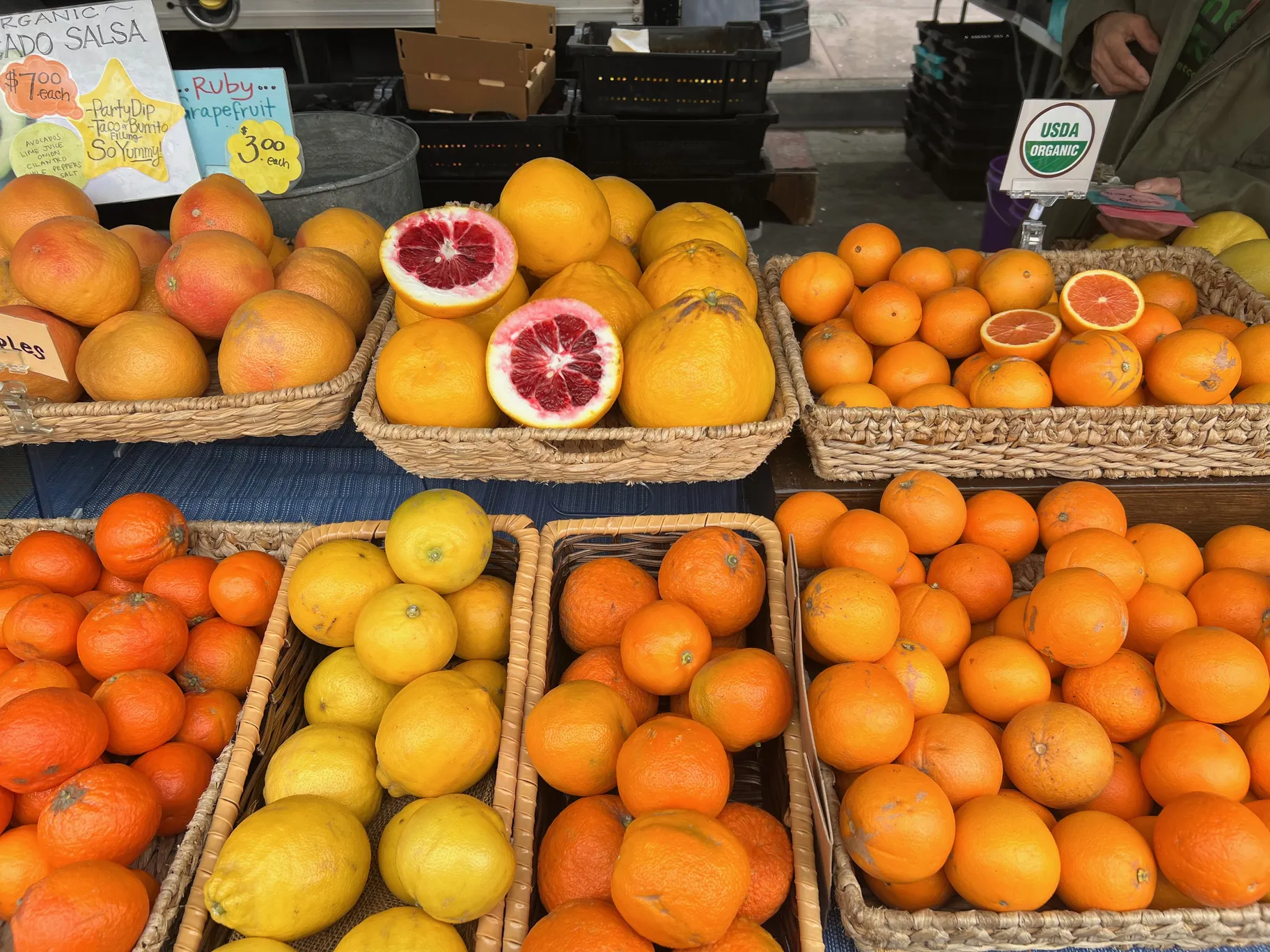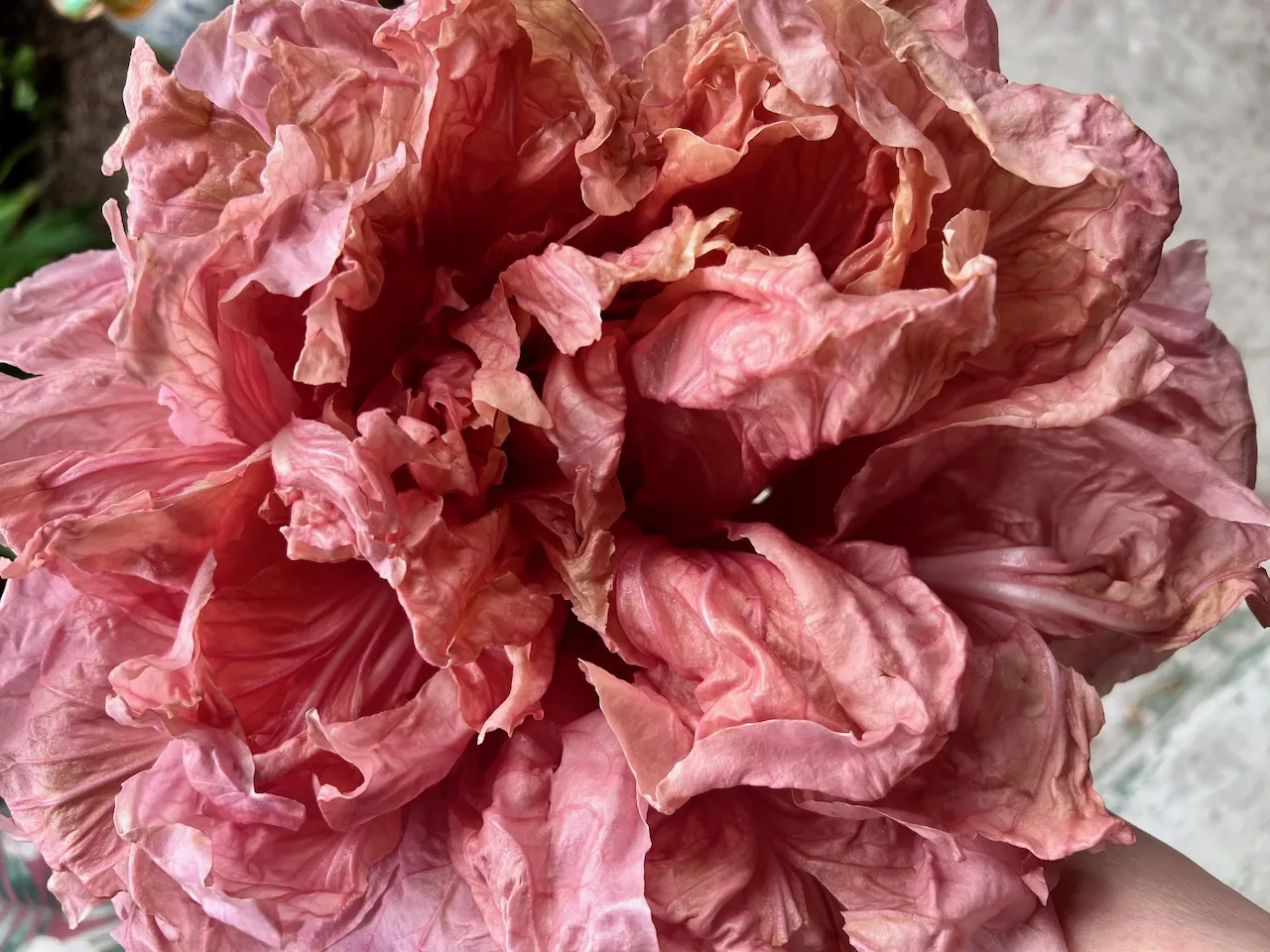I love citrus. I mean I really love them. I have a 20-foot-tall blood orange tree in my front yard, and two Meyer lemons and five lime varieties in pots in the backyard. I guess I feel that as a Californian with a backyard, it’s my right to be able to pick them off the tree.
By the way, have you seen the viral video of the young woman who, despite having a lemon tree filled with lemons, is still buying them from the store because she thought “something had to be done to fruit” before you could eat it? She’s definitely not a Californian.
So, back to the citrus glut we’re in right now. Just as an example, one single farmer who sells at the Atwater farmers market has 15 varieties on offer between lemons, oranges, mandarins, pomelos, and limes.

Laura Ramirez has this selection of citrus varieties at JJ Lone Daughter’s stand at the Hollywood farmers market. Photo by Evan Kleiman.
It’s all too easy to just juice the abundant bags of fruit or eat them out of hand, but I'd like to encourage you to slow down and compose a beautiful citrus salad that you sit and eat at the table with a fork and knife. These types of salads are so easy to make and customize. First, pick the citrus you love to eat. I like to use a super sweet and juicy navel orange as a base, then add a tangerine to build on sweetness but add a bit of complexity. To heighten the acid, I add a deeply red blood orange. They always taste like the intellectual of the group to me — more tart than the naval, a bit acerbic and complex. If you’re a fan of grapefruit, add a bit of that too. You want balance in flavor, and you will achieve that by the varieties you choose and the amounts of each you add. Are you a fan of bitterness? Lean into the grapefruit.

Pink radicchio is a stunning addition to a winter salad when available. Photo by Evan Kleiman.
I like to pair the chosen citrus with the slightly bitter note of another piece of produce on farmers tables now — pink radicchio. They’re gorgeous, the fashion plate of spring produce. The colors vary from a gentle coral pink to hints of a light lime green streaked through the full blousy leaves. The combination of colors of the citrus flesh and the pink radicchio is extremely satisfying to experience. Get some visual variety by preparing each type of citrus differently. Don’t simply cut all of it up into circles. Cut each type uniquely, but begin by trimming off all the peel and pith (the flavonoid-rich spongy white part underneath the peel). This tutorial shows you how to trim the fruit and cut it into supremes, or individual peel-free segments. One suggestion is to cut the navel orange into circles, the blood orange into half-circles, and the tangerine into supremes. Just vary the shapes according to your mood.
As for the radicchio, wash and dry the leaves, and leave them whole or in large hand-torn pieces. I like to dress the radicchio with a vinaigrette, but leave the citrus alone unless you want to give it a squeeze of lemon or lime. As for the dressing, many people use citrus juice as the acid, but I prefer a sharper dressing since I’m only going to use it on the radicchio. I think the traditional French vinaigrette with shallot, dijon mustard, and white or red wine vinegar mixed with olive oil works beautifully for the salad.
To put it all together, dress the radicchio with the vinaigrette and divide it amongst individual plates, garnish the salad greens with the citrus, making a pleasing arrangement. Drizzle a bit of olive oil over the citrus, and sprinkle your favorite crunchy salt. Sit and eat with that knife and fork you’ve set with your favorite napkin.
